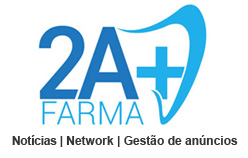By 2030, patients living with Duchenne muscular dystrophy (DMD) — a genetic muscle wasting disease caused by mutations on the gene that produces dystrophin — will have greater choice when it comes to the drug types used for treatment, according to GlobalData. The leading data and analytics company notes that there are 23 DMD-targeting therapeutics currently being developed in the US and Japan, and eight of these have the potential to make it to market in the next 10 years.
Chris Pilis, Immunology Analyst at GlobalData, comments: “The variation seen in the DMD pipeline is really encouraging. This patient population largely relies on steroid treatments, which can have serious side effects such as stunted growth in adolescents, bone fragility, and weight gain. Even alternatives like exon-skipping therapies need to be used in conjunction with steroids.
“Key opinion leaders (KOLs) interviewed by GlobalData were enthusiastic about these products, expecting them to be efficacious and have better safety and tolerability profiles in comparison to steroids. DMD is a space with great untapped potential, and any one of the numerous promising candidates could substantially change the competitive landscape of the DMD space.”
Chris Pilis provides an overview of these pipeline drugs:
Gene therapies: Focus on micro-dystrophin gene promising but Pfizer’s safety concerns may be a warning sign
The two gene therapies are currently being investigated in the US are Pfizer’s fordadistrogene movaparvovec and Sarepta’s delandistrogene moxeparvovec. Both are intravenously (IV) administered products in Phase III clinical trials, and are designed to deliver a micro-dystrophin encoding gene to muscle tissue.
Pilis comments: “The dystrophin gene that expresses the protein impacted by DMD is too large to fit inside Pfizer and Sarepta’s usual adeno-associated viral (AAV) vectors — you can imagine these as vessels that are used to deliver genetic material into body cells during therapy. Therefore, targeting the micro-dystrophin encoding gene, which is around one fifth of the size, is quite ingenious.”
KOLs interviewed by GlobalData were hopeful that these will make it to market, as their expected ability to treat most — if not all — DMD patient segments mean they have potential to replace exon-skipping therapies. However, Pilis warns that Pfizer’s recent announcement that it excluded patients with certain mutations from trials due to safety concerns may be a red flag.
Pilis continues: “Pfizer’s news doesn’t spell the end, but it does cause concern that these drugs won’t be as versatile as expected. Approval for all ages may be hindered by a need for extensive, long-term safety data.”
Cell therapy looks to encourage cellular regeneration in patients that can no longer walk
CAP-1002 (NCT03406780) is a cell therapy in Phase IIb developed by Capricor that claims to modify the immune system to encourage cellular regeneration. It is a first-in-class IV drug that has mainly been tested on patients that can no longer walk, also known as ‘non-ambulatory’ patients.
Pilis notes: “Non-ambulatory patients are the most underserved within DMD. The problem is that treatments neither improve nor stabilize the disease, they only delay it. So, after patients lose ambulation, physicians usually don’t really administer anything else aside from steroids as (to date) it is impossible to regain ambulation by any means. Therefore, physicians wouldn’t administer an exon-skipping therapy both because it wouldn’t help substantially and, importantly, because payors will rarely cover exon-skipping treatments (costing around $750,000 ACOT per patient) on a non-ambulatory patient.”
KOLs anticipate that CAP-1002 could be co-administered with other DMD-targeting treatments, aiming to support cardiac function of patients in latter stages of the disease.
FibroGen is taking a unique antifibrotic approach but uptake could be mediocre
FibroGen’s pamrevlumab is a monoclonal antibody (mAb) drug type, which takes an antifibrotic approach — a technique that slows or prevents tissue scarring. It is an intravenous (IV) product in Phase III of clinical trials for both ambulatory and non-ambulatory patients.
Pilis comments: “Despite pamrevlumab’s interesting approach, KOLs believe that more data on its safety is required, and that its uptake could be mediocre if the drug does not prove to be game-changing in terms of efficacy during clinical studies.”
Oral small molecules display encouraging results but their ability to treat the disease without steroids questioned
The oral small molecules in late stages of development are PTC Therapeutics’ Translarna, Italfarmaco’s givinostat, Taiho’s pizuglanstat, and Santhera’s vamorolone. Each has a different mechanism of action and all four have displayed encouraging results.
Pilis adds: “It would be a gamechanger if one of these drugs could be established as a monotherapy and allow patients to bypass troublesome steroids. Of these drugs, KOLs were particularly enthusiastic about synthetic steroid vamorolone, as it could be administered instead of traditional steroids — but with a considerably better tolerability profile.”
 2A+ Farma Portal de notícias
2A+ Farma Portal de notícias
